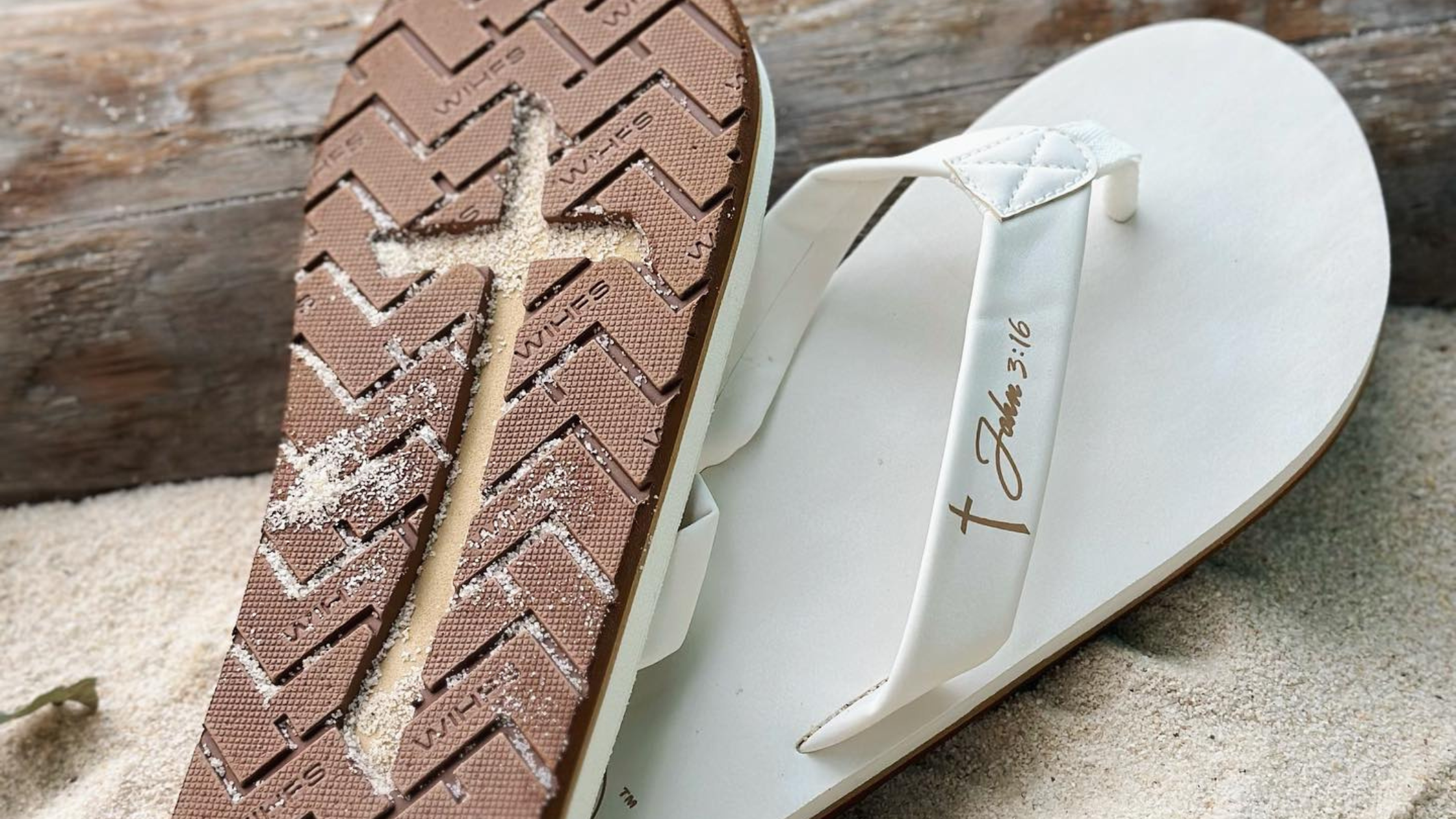The concept of walking in Jesus Christ's footsteps is a central tenet of Christianity. It is a call to emulate his teachings, values, and actions in our own lives. One way to do this is to learn about his historical context and the everyday objects that he used, such as his sandals.
Sandals played a vital role in Jesus's life and ministry. They were essential for navigating the dusty terrain of ancient Judea and for protecting his feet from the elements. Sandals were also a symbol of humility and simplicity, values that were important to Jesus.
Sandals In Ancient Judea
In the ancient Middle East, sandals were the most common type of footwear. They were made from a variety of materials, including leather, wood, and straw. The simplest sandals consisted of a sole with straps that went over the foot and ankle. More elaborate sandals could have additional straps, buckles, and decorations.
Sandals were essential for daily life in ancient Judea. The terrain was dusty and rocky, and sandals protected the feet from injury. Sandals also allowed people to walk long distances without discomfort.
In addition to their practical function, sandals also had symbolic significance in religious and cultural contexts. For example, removing one's sandals was a sign of respect when entering a holy place. Sandals were also associated with humility and simplicity.
Jesus's Sandals: A Glimpse Into His Life
The origin of Jesus sandals can be traced back to ancient times when footwear was a straightforward affair, comprising leather straps and soles. Sandals were widely worn in the Middle East, the very region where Jesus resided, and were donned by individuals from all walks of life, including farmers, traders, and religious figures. These biblical sandals possess a rich and ancient heritage that extends back to early periods in Middle Eastern history, and, in fact, sandals represented the predominant form of footwear in numerous ancient societies, including that of the ancient Israelites.
While the precise footwear worn by Jesus remains uncertain, the design associated with what are often called "Jesus sandals" is believed to bear similarities to the styles worn during his era. These sandals were likely crafted from leather, featuring a flat sole and straps that wrapped around the foot and ankle. The precise origins of biblical sandals remain somewhat unclear, but it is documented that they were fashioned from a variety of materials, including leather, straw, and papyrus. Typically, they displayed a straightforward design, with a sole that was attached to the foot through a series of straps.
Walking The Path of Faith
The concept of "walking in Jesus's footsteps" in a spiritual sense refers to following his example and living our lives in accordance with his teachings and values. It is a call to be kind, compassionate, forgiving, and to work for justice and peace in the world.
Emulating Jesus's Actions, Teachings, And Values
Jesus's actions, teachings, and values provide a roadmap for living a life that is both meaningful and fulfilling. Here are a few examples of how we can emulate Jesus in our own lives:
- Love Our Neighbors As Ourselves: Jesus taught us to love everyone, regardless of their race, religion, social status, or any other difference. We can put this teaching into practice by showing kindness and compassion to everyone we meet, even those who are difficult to love.
- Forgive Others: Jesus forgave those who crucified him, and he taught us to forgive others as well. Forgiveness is not always easy, but it is essential for healing and reconciliation.
- Serve Others: Jesus was a servant leader, and he taught us to put the needs of others before our own. We can serve others in our communities, our churches, and our workplaces.
- Stand Up For What Is Right: Jesus spoke out against injustice and oppression, and he called us to do the same. We can stand up for what is right in our own lives and in the world around us.
Preservation And Display of Historical Sandals
Several museums and institutions around the world house collections of ancient sandals from the Holy Land. One of the most notable collections is held at the Israel Museum in Jerusalem.
Preserving ancient sandals is a challenging task, as they are made from perishable materials. However, museums use a variety of techniques to protect these artifacts, such as climate control and conservation treatments.
Ancient sandals are often displayed in historical exhibitions and displays. They can provide insights into the everyday lives of people in the ancient world and the cultural significance of footwear.
The Impact of Sandals On Modern Faith And Pilgrimage
Sandals continue to play a role in modern Christian pilgrimages. Many pilgrims choose to wear sandals as a way to connect with Jesus and his way of life. Some pilgrims even walk the entire pilgrimage route in sandals, just as Jesus would have done.
The symbolism of sandals is also evident in contemporary religious practices. For example, some churches have a tradition of removing their shoes before entering the sanctuary. This is a way to show respect for God and to remember that we are all on holy ground.
Sandals also have symbolic significance in contemporary religious practices. For example, some churches have a tradition of removing their shoes before entering the sanctuary. This is a way to show respect for God and to remember that we are all on holy ground.
Sandals are also sometimes used in religious rituals and ceremonies. For example, some priests wear sandals during Mass, and some pilgrims wear sandals as they walk the Camino de Santiago.
Conclusion
The historical significance of Jesus Christ's sandals is a reminder of his humble lifestyle and his commitment to serving others. By understanding the context in which he lived and the objects that he used, we can gain a deeper appreciation for his ministry and message. May we be inspired to walk in Jesus's footsteps by living our lives with humility, compassion, and love. If you are looking to buy Jesus Christ's Sandals for men and women, Walk in His Footsteps is the website you should explore.



